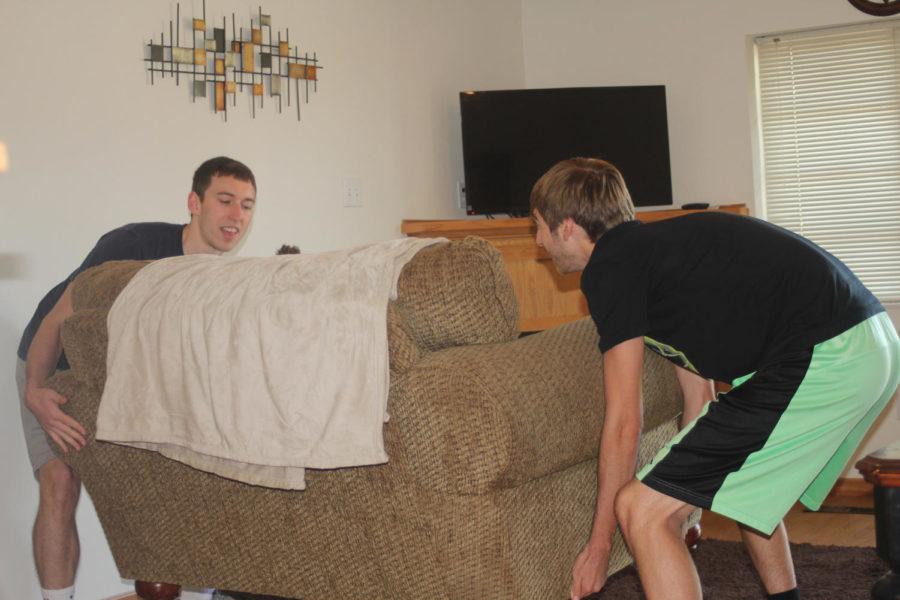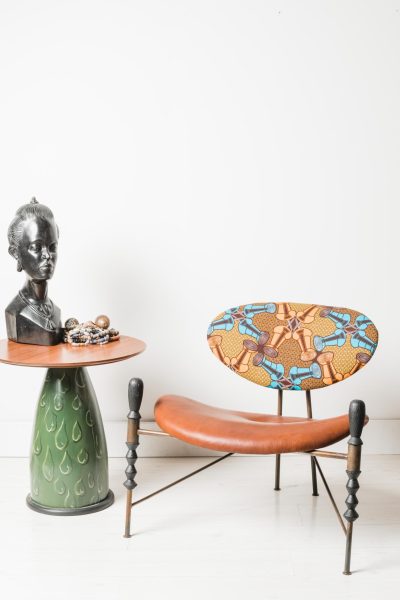How to make your apartment feel like home
Pictured right to left: Erick Smith, Junior and Jake Starnes, Junior. Getting to work on moving in their couch for their new apartment off campus. Students choose to move off campus because it is cheaper than continuing to live in dorms.
July 29, 2019
Moving into a new apartment can be challenging with all the fees and transportation — especially transforming that space into an area that feels like home. Here are some tips to consider when you’re ready to start decorating.
Theme
Figuring out the theme of your apartment can be a challenge — deciding where start or even choosing your theme. Samantha Kragel, senior in interior design, said she likes to start with one piece and build from there.
“Find your source of inspiration — don’t always feel stuck in a themed box,” Kragel said. “Pick different pieces with a similar color palette and a variation of materiality. As long as you surround yourself with things you like — you will be happy!”
Sticking with neutrals such as ivory, black, grey, taupe and shades of white as a base for the theme then using colors within the same palette as an accent will help emphasize the theme by creating contrast or rhythm.
“Red and yellow, though cyclone colors, can be very energetic and make relaxation take a back seat,” Kragel said. “Cool blues, muted greens, blush and neutral colors will make your room more of a cozy spot than a stress spot. It will also help you to fall asleep.”
If you have some items that are sentimental to you, try to incorporate them into your apartment. Using accessories such as art, lamps and rugs can contribute to the theme of your space, Kragel said fabrics can help enhance the texture of your theme.
“Consider adding in several fabric elements into a space to keep a space homey, warm and inviting,” Kragel said. “Pillows, blankets, rugs, tapestries all can bring a new textural element.”
There will be an “Art for Rent” open house from 10 a.m. to 3 p.m. Aug. 6 and 10 a.m. to 1 p.m. Aug. 7 on the first floor of the Memorial Union. The art can be rented for six months to one year.
Opening the space
Natural lighting can open your space and make it feel less cluttered.
If you have a space that has a limited amount of natural lighting, Kragel said task lamps and ambient lights — which can refer to both natural and artificial —can be used as a supplement to brighten a room.
If you live in an area with limited natural light, rearranging furniture will help maximize what you have. According to an article written by Elle Decor, reducing obstructions from furniture can help maximize the natural light that bounces inside the room.For example, if you are going to set up a bookshelf set it perpendicular to a window or add mirrors to help light bounce inside the space.
In an article written by the New York Times, Matthew Tanteri, principal of the day lighting consulting firm Tanteri & Associates and an assistant professor of lighting design at Parsons the New School for Design, said “glossy surfaces can actually be a detriment because they can create glare.”
So sticking with a matte finish for ceilings, walls and floors can help reflect light as well as minimizing darker artwork that can absorb the light.
Finding items with a purpose
A lot of people struggle with clutter in their apartment — making the already small space feel cramped. Kragel said concealed storage — such as an ottoman with a storage compartment – is key to decluttering your apartment.
“Everything has multiple purposes,” Kragel said. “Let everything in your space serve a function. If you want something decorative, make sure it serves a function as well. Rather than just buying an ottoman, buy one that has storage inside.
A way to declutter your apartment is by managing your wires — which can sometimes feel like an afterthought — and putting them out of sight. Using hanging hooks can help hide the wires behind your furniture and separating the cords with a binder clips can help prevent tangling.

















